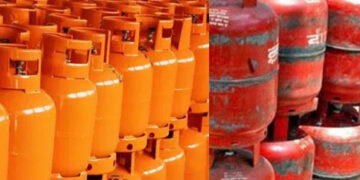Two of the biggest challenges are the stigma surrounding addiction and the accessibility of resources. Discover why addiction does not guarantee sobriety and explore the realities of recovery and treatment. Research by the National Institute on Drug Abuse indicates that medication should be the first line of treatment when dealing with addictions, particularly opioids. Such medications are also available for treating addictions to alcohol and nicotine. Being honest with oneself means acknowledging the realities of one’s addiction, including the triggers, the consequences, and the steps needed for recovery. It’s about admitting when one is struggling and seeking help when needed.
Family Therapy
- However, data-driven analyses show that investing in rehab yields robust returns.
- Over 3 million of them reported binge drinking, and 663,000 were categorized as heavy alcohol users.
- The difference is caused not only by biological differences but also by behavioral and societal differences.
- However, there is still much work to be done to help those struggling with alcoholism.
- We can do the same here, but it’s going to take sustained, national-level commitment.
- The findings underscore the importance of continuous care and adjustment in treatment plans.
When we talk about addiction or mental health, numbers only tell part of the story. Yes, it’s important to understand how many people are struggling. But what truly matters is how many are getting help and finding a path toward recovery. The latest NSDUH data paints a picture that’s both sobering and hopeful. The earlier we can intervene, the better chance we have of preventing long-term struggles with addiction and mental health.
What is the success rate of drug addiction therapy?
Unfortunately, there is little data on the success rate of non-professional interventions. According to a study from the Washington University School of Medicine, interventions that involve trained professionals have a 90% success rate, meaning the addict agrees to enter treatment. However, there are a few promising statistics that indicate rehab can be very effective for those who commit to their treatment. You can also seek out support groups like Alcoholics Anonymous or SMART Recovery that can connect you to resources and local treatment centers that are currently accepting patients. Getting treatment as soon as possible is the best way for those who have developed an addiction to avoid dangerous health effects, including drug overdoses.
Economic and Healthcare Cost Burden
They’re happening in our schools, our workplaces, and across kitchen tables. Almost half of young adults are struggling with mental health or addiction. That’s our next generation, trying to build futures while battling invisible wounds. And when those wounds go untreated, the ripple effects are enormous—lost lives, overloaded healthcare systems, broken families, and communities in crisis.
Alcohol Relapse by Race
- However, better data collection enhances our understanding of who seeks rehab and its positive effects.
- Over 70% of parents in recovery reported having a ‘good,’ ‘very good,’ or ‘excellent’ relationship with their children.
- 36% of Americans who are suffering from alcohol use disorder are going to recover after one year of treatment by a professional.
- Research shows that after 5 years of continuous recovery, the relapse rate drops to approximately 15%, similar to the general population.
- One reason why people relapse after rehab is because their post-rehab support plan isn’t personalised enough to address their needs.
The phenomenon of relapse, defined as the return to substance use after an attempt to quit, offers crucial insights into the complexity of addiction as a chronic condition. In the United States, relapse rates are alarmingly high, often paralleling those of other chronic diseases such as hypertension and diabetes. In many respects, relapse underscores that addiction recovery is a long-term management process requiring sustained care. Ultimately, effective strategies combine these elements to decrease relapse rates and promote enduring recovery. The success rate of alcohol recovery can vary significantly based on multiple factors, including the type of treatment and individual commitment. Approximately 36% of individuals with alcohol use disorder (AUD) recover after one year.
Substance Use Disorders (SUDs): Holding Steady
Racial and ethnic differences reveal disparate burdens of substance use, as well as uneven access to treatment services. Despite men’s higher overall usage, both genders require support structures that address specific risk factors, treatment adherence, and relapse triggers. Socioeconomic status is strongly linked to substance abuse vulnerability, emphasizing that broader social conditions must be addressed alongside clinical interventions.
Maintaining sobriety requires ongoing effort, and relapse can be a part of the journey, but it does not mean failure. Ultimately, with the right resources and support, many individuals can lead fulfilling lives in recovery from alcoholism. Relapse rate in addiction treatment refers to the percentage of individuals who return to substance use after attempting to quit.
When you combine those numbers, nearly half of all young adults were affected by addiction, mental illness, or both in 2023. These years are when many people begin facing emotional challenges or experiment with substances – and those patterns can stick. That makes this age group a critical target for education, early intervention, and mental health support. Alcohol Tops The ListAlcohol remains the most widely used substance in the United States. In 2023, about 134.7 million people (roughly 47.5% of the population) reported drinking in the past month.
Therapy, structured programs, or even just talking to someone could help you feel more like yourself again. There will be times when you feel your therapies aren’t helping and when self-doubt gets the better of you. Your counsellors at The Hader Clinic will do sobriety, relapse, and addiction recovery statistics in 2023 their very best to help you work through those feelings. Of course, if you decide to leave, our doors will always remain open to you should you choose to return. As for the Hader Clinic, we can tell you that an internal audit found that we have a long-term sobriety success rate of 74%.
Substance use is woven into daily life for many, whether casually, socially, or in ways that may signal deeper struggles. Medication-assisted treatment (MAT) is an evidence-based approach that combines medications with counseling and behavioral therapies. It is considered the gold standard for opioid use disorder and is also highly effective for alcohol use disorder.
style=”display:none;”>





















































